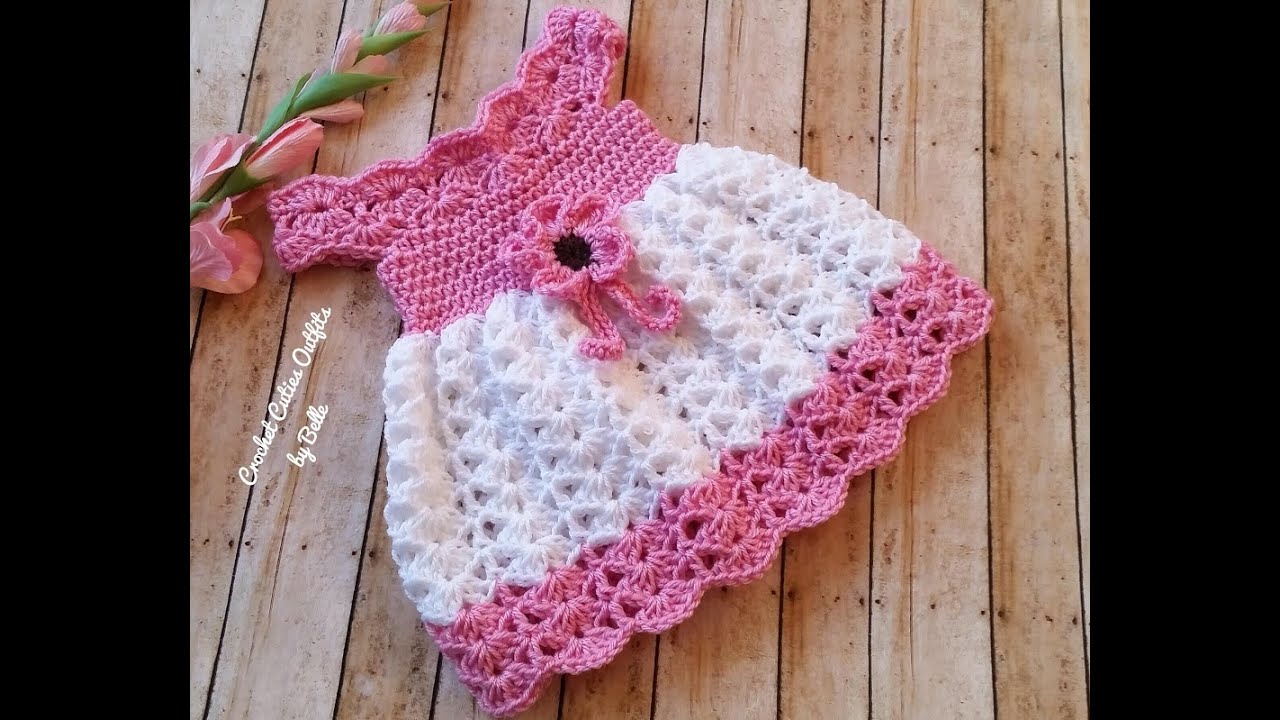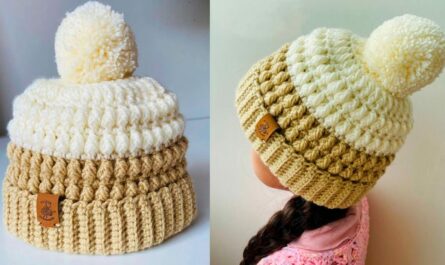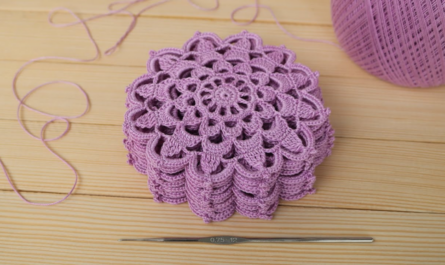There’s something truly special about a handmade gift for a new baby. A crocheted dress is not only adorable but also a project filled with love. This tutorial is designed to be approachable for confident beginners and rewarding for more experienced crocheters. Imagine a little one wearing this soft, beautiful dress, especially perfect for the warm climate here in Phnom Penh!
This detailed, step-by-step tutorial will guide you through creating a simple, charming baby dress, starting from the top-down yoke, which means no seaming the body! We’ll focus on a versatile size that generally fits 0-6 months, but with tips on how to adjust.
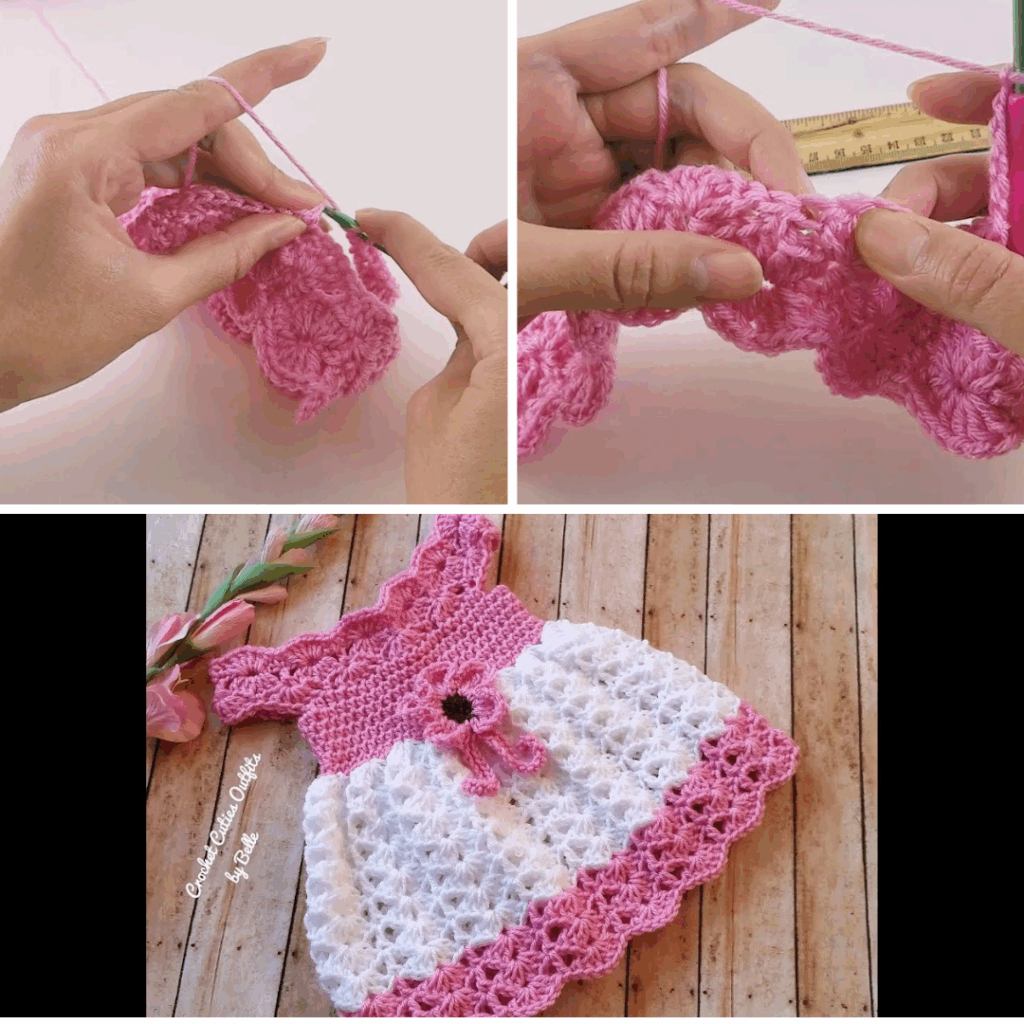
1. Planning Your Baby Dress: Key Decisions
A bit of planning ensures a smooth process and a beautiful finished dress.
- Choose Your Yarn: This is the most crucial decision for a baby item.
- For Baby’s Skin: Prioritize softness and washability. Baby acrylics are popular for their softness, durability, and easy care. Baby cotton or bamboo blends are excellent choices for their breathability, especially important in warmer climates like Phnom Penh. Avoid wool unless it’s specifically “superwash” and very soft, as it can be itchy for sensitive skin.
- Weight: DK (Double Knitting, Category 3) or Light Worsted (Category 3/4) weight yarn is ideal. It works up quickly but isn’t too bulky for a tiny dress.
- Color: Pastels are classic for babies (pinks, purples, mint green, yellow, white). Variegated yarn can also add a charming touch.
- Choose Your Hook Size: Check your yarn label for the recommended hook size. For this pattern, a 4.0mm (G/6) hook is a good starting point for DK weight yarn, ensuring a soft drape. You might go up or down a size depending on your tension.
- Choose Your Stitch Pattern: Simple stitches are best for baby garments. This tutorial will primarily use Double Crochet (dc) for the main body for speed and simplicity.
2. Essential Materials and Tools
Gather your supplies before you begin.
- Yarn: Approximately 150-200 yards (135-180 meters) of your chosen baby yarn.
- Crochet Hook: The size matching your yarn and desired tension (e.g., 4.0mm / G/6).
- Stitch Markers: Essential for marking increase points and the beginning of rounds.
- Tapestry Needle: For weaving in ends.
- Scissors.
- Small Buttons: 2-3 small, flat buttons (approx. 0.5 inches or 1.25 cm) for the back closure.
3. Understanding the Top-Down Construction
This dress is worked from the yoke down. The yoke is the top portion that covers the shoulders and chest. It starts flat to create a back opening, then joins to form the dress body. This seamless approach minimizes finishing work.
Approximate Size for 0-6 Months:
- Chest Circumference: 17-19 inches (43-48 cm)
- Yoke Depth (from neck to underarm): 4.5-5 inches (11.5-12.5 cm)
- Total Dress Length (shoulder to hem): 11-13 inches (28-33 cm)

4. The Construction Journey: Step-by-Step Crochet
Let’s begin crocheting your sweet baby dress!
Abbreviations Used:
- ch: chain
- sl st: slip stitch
- sc: single crochet
- dc: double crochet
- sk: skip
- st(s): stitch(es)
- sp: space
- inc: increase (work more than one stitch in the same stitch/space)
- (): repeat instructions within parentheses
- *: repeat instructions between asterisks
Part 1: The Yoke (Worked Flat)
The starting chain should loosely fit around the baby’s neck. A chain of 60 stitches is a good starting point for 0-6 months.
Chain 60.
Row 1: Dc in the 3rd ch from hook and in each ch across. (58 dc). Ch 2, turn. (The skipped 2 chains count as the first dc).
Row 2 (Increase Row): Work (1 dc, ch 1, 1 dc) into designated stitches to create the corners.
- Dc in first 8 sts.
- (1 dc, ch 1, 1 dc) in next st. [Place a stitch marker in the ch-1 sp]
- Dc in next 12 sts.
- (1 dc, ch 1, 1 dc) in next st. [Place a stitch marker in the ch-1 sp]
- Dc in next 18 sts.
- (1 dc, ch 1, 1 dc) in next st. [Place a stitch marker in the ch-1 sp]
- Dc in next 12 sts.
- (1 dc, ch 1, 1 dc) in next st. [Place a stitch marker in the ch-1 sp]
- Dc in last 8 sts. Ch 2, turn. (Total 66 dc, 4 ch-1 sps).
Row 3:
- Dc in each dc up to the first ch-1 sp.
- (1 dc, ch 1, 1 dc) in the ch-1 sp. [Move stitch marker to new ch-1 sp]
- Dc in each dc up to the next ch-1 sp. (1 dc, ch 1, 1 dc) in the ch-1 sp. [Move stitch marker]
- Repeat * to * 2 more times.
- Dc in each remaining dc to end of row. Ch 2, turn.
Row 4 – 7: Repeat Row 3. (After Row 7, your yoke should have visibly grown. It should measure approximately 4.5-5 inches from the neck edge at the deepest point when measured flat. If it’s not deep enough, add one more repeat of Row 3.)
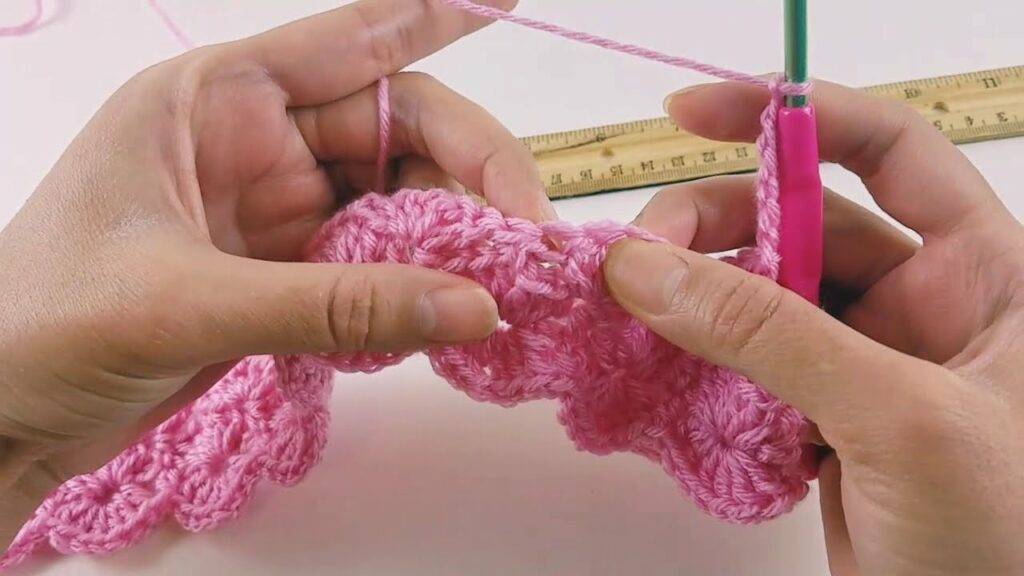
Part 2: Dividing for Body & Sleeves (Joining to Work in the Round)
Now we’ll separate the armholes and close the yoke into a circle.
Row 8 (Body Join):
- Ch 2. Dc in each dc up to the first ch-1 sp (Front Panel 1).
- Skip first ch-1 sp and all dc stitches of the first Sleeve Panel.
- Ch 2 (this creates the underarm opening).
- Dc in each dc up to the third ch-1 sp (Back Panel).
- Skip third ch-1 sp and all dc stitches of the second Sleeve Panel.
- Ch 2 (this creates the second underarm opening).
- Dc in each remaining dc (Front Panel 2).
- Sl st to the top of the initial Ch 2 to join the round. You are now working in the round. (Total dc count will depend on your specific starting stitch count and increases, but it should be an even number).
Part 3: The Skirt (Worked in Rounds)
Now the dress body will grow downwards.
Round 9: Ch 2. Dc in each dc around the dress body, including working 2 dc into each of the Ch-2 sps from the underarm joins. Sl st to top of initial Ch 2.
Round 10 – 20: Ch 2. Dc in each dc around. Sl st to top of initial Ch 2. (This creates a straight, comfortable skirt. If you want more flare, you can add an increase round: every 3rd or 4th round, ch 2, dc in next 9 sts, 2 dc in next st. Repeat around. Sl st.) (Adjust the number of rounds until the dress reaches your desired length. For 0-6 months, a common length is 11-13 inches / 28-33 cm from shoulder to hem.)
Round 21 (Shell Stitch Border – Optional but pretty):
- Ch 1. Sc in same st.
- Sk 2 sts, (2 dc, ch 1, 2 dc) in next st (this forms a shell).
- Sk 2 sts, sc in next st.
- Repeat * to * around. Sl st to first sc to join. If the pattern does not end evenly, adjust the last few skips/stitches as needed to meet the first sc.
Fasten off and weave in ends.
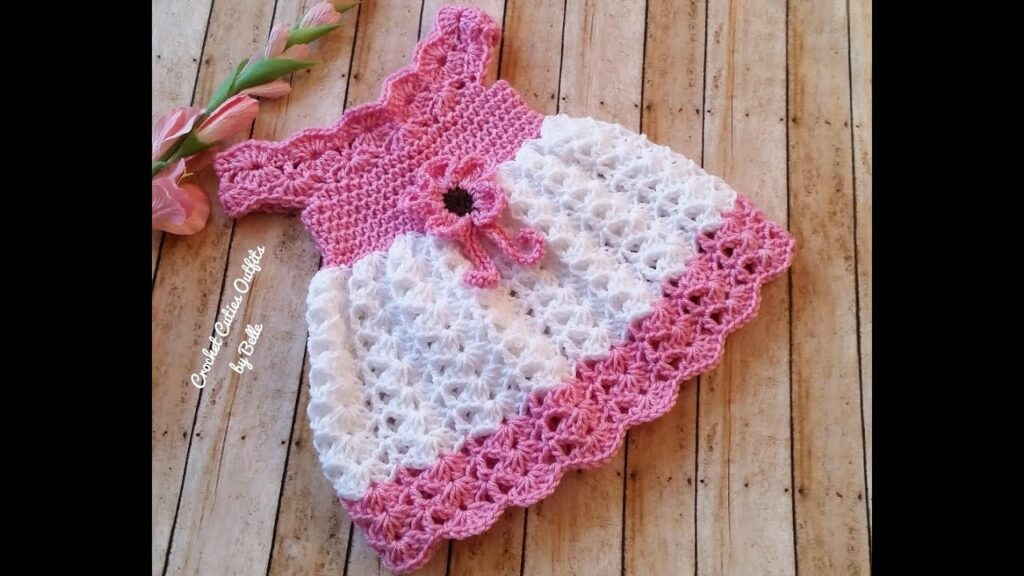
Part 4: Finishing Touches
- Sleeve Edging (Optional but recommended):
- Attach yarn to the bottom of one armhole (where the Ch 2 sp was).
- Round 1: Ch 1. Work sc evenly around the armhole opening (approximately 1 sc per dc row, and 2 sc in the Ch-2 underarm sp). Sl st to first sc.
- Round 2 (Optional decorative edge): Ch 1. Sc in each sc around. Sl st to first sc.
- Fasten off and weave in ends. Repeat for the second armhole.
- Neckline & Back Opening Edging:
- Attach yarn to the bottom corner of one back opening edge.
- Work sc evenly up the side of the back opening, around the entire neckline, and down the other side of the back opening. Sl st to join if working back to starting point, or simply fasten off.
- Button Loops: On one side of the back opening (usually the left side when looking at the back of the dress), create button loops.
- Method 1 (Chain Loops): Ch 3-4 (adjust based on button size), sl st into a nearby stitch to form a loop. Space 2-3 loops evenly along the back opening.
- Method 2 (Picot Loops): Sc into a stitch, ch 3, sl st into the 3rd ch from hook (picot). Space 2-3 picots evenly.
- Buttons: Sew your small, flat buttons onto the opposite side of the back opening, aligning them with your newly created button loops.
- Weave in All Ends: Use your tapestry needle to meticulously weave in every yarn tail for a neat and professional finish. This is crucial for baby items so loose ends don’t get caught.
Video Tutorial :
You’ll be delighted by how easy it is to create this sweet and cheerful baby dress. It’s a wonderful reminder that with a bit of yarn and creativity, you can stitch warmth and love into any garment for a special little one!
